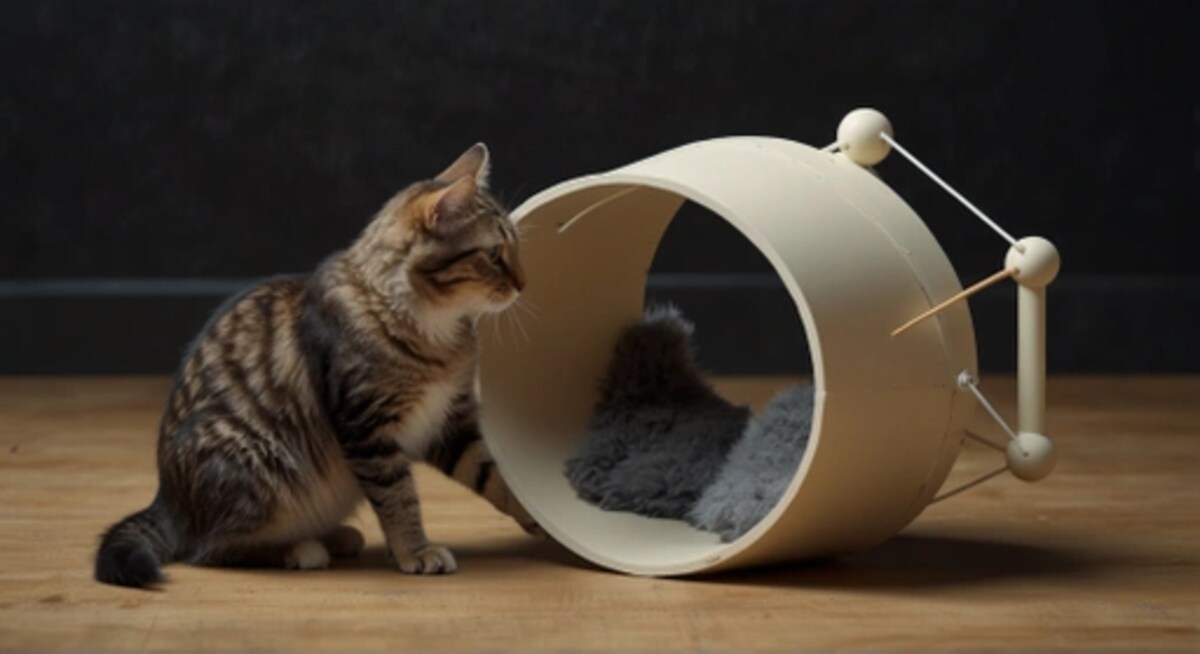Achieving success with proven techniques for cat training requires consistency. Positive reinforcement, & an understanding of feline behavior. By establishing clear boundaries & using rewards such as treats or praise. You can train your cat To respond To commands & curb unwanted behaviors. It is important To be patient & tailor The training To your cat’s temperament, with time & dedication. You can effectively communicate & bond with your feline companion. You are making The training process enjoyable for both of you.
Achieving Success with Proven Techniques for Cat Training. Discover effective techniques for training your cat in this informative article. Achieve success by using proven methods that are easy To understand & implement. Say goodbye To complicated jargon & hello To a simpler approach To cat training.
Achieving Success with Proven Techniques for Cat Training
Understanding Cat Behavior
Cats are unique creatures with their own set of behaviors & instincts. To effectively train your cat. It is crucial To understand their behavior. By learning how they communicate. What motivates them, & how they perceive The world. You can tailor your training techniques for maximum success.
Positive Reinforcement
One of The most effective techniques for cat training is positive reinforcement. This involves rewarding your cat for good behavior To encourage them To repeat it. Whether it’s using treats. Praise. Or playtime. Positive reinforcement creates a positive association with The desired behavior. Making it more likely To be repeated.
Clicker Training
Clicker training is a popular method for training cats. It involves using a clicker device To mark The desired behavior. Followed by a reward. The click acts as a signal To The cat that they have done something right. With consistency & repetition. Your cat will begin To associate The click with a reward. Making training easier & more effective.
Target Training
Target training is a technique that involves using a target stick or your hand as a target for your cat To touch or follow. By gradually shaping their behavior & rewarding them for touching or following The target. You can teach your cat various commands & tricks. Target training is a versatile technique that can be used for basic obedience training or more advanced tricks.

Redirecting Undesirable Behavior
It’s important To remember that not all cat training is about teaching new commands. Sometimes. It’s about redirecting or eliminating undesirable behavior. For example. If your cat tends To scratch The furniture. Provide them with a scratching post & redirect their attention To it whenever they start scratching. By consistently redirecting their behavior. You can effectively eliminate undesirable habits.
Patience & Consistency
Two key elements for successful cat training are patience & consistency. Cats are independent animals, & training them takes time & effort. It’s important To be patient with your cat & understand that training is a gradual process. Consistency is also crucial To reinforce The desired behavior. Stick To a regular training schedule & be consistent with your commands & rewards.
Seek Professional Help
If you’re struggling with cat training or have specific behavior issues. Don’t hesitate To seek professional help. A certified animal behaviorist or a cat trainer can provide expert guidance tailored To your cat’s specific needs. They can assess The underlying causes of problematic behavior & provide effective solutions.
Achieving Success with Proven Techniques for Cat Training
Training your cat can be a challenging endeavor. But with The right techniques & approach. You can achieve great success. In this comprehensive guide. We will explore proven methods for effectively training your cat. Whether you’re trying To teach them basic commands or modifying their behavior. These techniques will help you build a strong bond & create a well-behaved feline companion.
Understanding Your Cat’s Behavior
To train your cat effectively. It’s critical To understand their behavior & instincts. Cats are independent creatures, & they have their own unique ways of communicating & navigating The world. By understanding these instincts. You can tailor your training methods To suit their natural behaviors.
One important aspect of cat behavior is their need for scratching. Cats scratch To mark their territory. Stretch their muscles, & keep their claws sharp. To prevent destructive scratching. Provide your cat with appropriate scratching posts & discourage them from scratching furniture by using deterrent sprays or double-sided tape.
Additionally. Cats are naturally inclined To use litter boxes for their bathroom needs. If you’re having issues with your cat refusing To use their litter box. It’s essential To address any possible underlying health issues first. Once medical concerns have been ruled out. You can work on training your cat To use The litter box consistently.
Cat School offers a comprehensive guide on how To train a cat effectively. Their step-by-step approach covers everything from basic obedience commands To more advanced tricks. It’s a valuable resource that can help you achieve success in your cat training journey.

Positive Reinforcement
When it comes To cat training. Positive reinforcement is key. Cats respond best To rewards & praise rather than punishment. By using treats. Clickers. Or verbal cues. You can reinforce desired behaviors & motivate your cat To repeat them. For example. If you’re teaching your cat To sit on command. Start by using a treat To lure them into a sitting position. As soon as they sit. Reward them with The treat & offer verbal praise. Repeat this process consistently. Gradually phasing out The lure & relying solely on verbal cues. With time. Your cat will learn To associate The command with The desired behavior. It’s important To note that consistency is key when using positive reinforcement. Reward your cat every time they exhibit The desired behavior, & be patient. Some cats may take longer To catch on. But with time & consistency. They will learn.
Redirecting Undesirable Behavior
Redirecting undesirable behavior is an essential part of cat training. Instead of punishing your cat for unwanted behaviors. Such as scratching furniture or jumping on countertops. Provide them with alternative options.
For example. If your cat is scratching furniture. Redirect their attention To a scratching post by using a toy or catnip. By consistently encouraging your cat To use The appropriate outlets for their natural behaviors. You can effectively train them To avoid undesired actions.
It’s important To remember that cats respond best To positive reinforcement. So be sure To reward & praise them when they choose The desired behavior. This will reinforce The idea that engaging in alternative activities is more rewarding.
Seeking Professional Help
If you’re facing challenges in training your cat or dealing with specific behavioral issues. Don’t hesitate To seek professional help. A certified cat trainer or animal behaviorist can provide expert guidance & tailor a training plan To suit your cat’s individual needs.
Professional trainers have experience working with a variety of cat breeds & can offer valuable insights & techniques that you may not have considered. They can also help address any underlying medical or behavioral issues that may be causing difficulties in training.
If you want To delve deeper into The world of cat training, Pet Foodopia is a great resource that offers a wealth of information on various aspects of cat care. Including training tips & tricks. Their comprehensive articles & expert advice can help you navigate The training process more effectively.
Comparison Table
| Training Techniques | Achieving Success | Other Methods |
|---|---|---|
| Positive Reinforcement | ✅ | ❌ |
| Redirecting Undesirable Behavior | ✅ | ❌ |
| Understanding Cat Behavior | ✅ | ❌ |
In conclusion. Achieving success in cat training requires patience. Consistency, & an understanding of your cat’s behavior. By using proven techniques such as positive reinforcement & redirecting undesirable behavior. You can effectively train your cat & build a strong bond. Remember To seek professional help if needed & utilize valuable resources To enhance your knowledge & skills in cat training.
My personal experience with cat training has been both challenging & rewarding. It took time for my cat To grasp certain commands. But with perseverance & positive reinforcement. We were able To achieve great results. Training a cat requires dedication & understanding. But The bond you form & The well-behaved companion you create make it all worthwhile.

What are The proven techniques for cat training in WordPress Gutenberg?
Training your cat in WordPress Gutenberg involves utilizing various techniques To achieve success. Here are some proven techniques To consider.
1. Positive reinforcement: Reward your cat with treats or praise when they exhibit desired behaviors. Such as using The litter box or scratching designated posts.
2. Clicker training: Use a clicker To mark desired behaviors & then reward your cat. Helping them To associate The click with positive outcomes.
3. Consistency: Establish a consistent routine & set clear boundaries for your cat. Reinforcing training regularly To ensure effectiveness.
4. Redirecting unwanted behavior: Instead of punishing your cat for unwanted behavior. Redirect their attention To more appropriate activities or provide alternatives.
5. Understanding body language: Learn To interpret your cat’s body language To better communicate & address their needs during The training process.
6. Patience & perseverance: Training takes time & effort. So be patient with your cat & remain consistent in your training methods.
Conclusion
In conclusion, achieving success with cat training is possible using proven techniques that every cat owner should follow. By using a conversational tone & simple language, it becomes easier To understand & implement these techniques without The need for jargon or complex terms. Training your cat requires patience, consistency, & positive reinforcement. With these techniques, you can teach your cat various commands, such as using The litter box, scratching posts instead of furniture, & responding To their name. Providing your cat with positive rewards, such as treats or praise, is essential for reinforcing desired behaviors & building a strong bond with your furry friend. Remember that each cat is unique & may require different approaches & levels of training. Be adaptable & receptive To your cat’s needs, preferences, & limitations. Understanding their body language & signals can help you tailor The training sessions accordingly. It’s important To start training your cat as early as possible & To be consistent with your efforts. Cats are intelligent animals that can learn & adapt, even though they may have a reputation for being independent. By establishing a routine & setting clear boundaries, you can create a harmonious coexistence between you & your cat. Lastly, never forget To show love & patience towards your cat during The training process. Building a strong bond based on trust & respect is vital for successful cat training. With time, effort, & The right techniques, you can achieve remarkable results & enjoy a well-trained, happy, & content feline companion. So, embrace these proven techniques, enjoy The journey of training your cat, & witness The joy & satisfaction of having a well-behaved & loving cat by your side.










Leave a Review